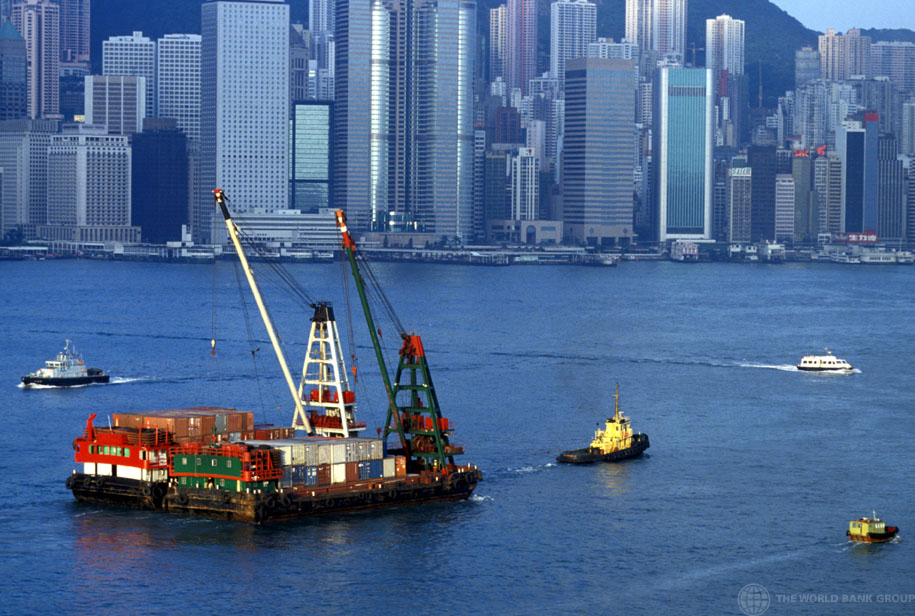Recommended
A new wave of this global crisis will hit developing countries later this year. Not through the virus itself, not through economic shutdowns inside those countries, but through slashing the money that international migrants send home: workers’ remittances.
Remittances are the largest single source of international development finance. But the World Bank projects that remittances to developing countries will slump by 23 percent this year—down to US$445 billion, versus the $574 billion it had projected without the crisis.
It will sting most in countries that rely on remittances. Remittances have been as large as 10 percent of gross domestic product in countries like Guatemala and Senegal, 20 percent in Honduras, and 30 percent in Haiti. The worst might await countries like Nepal, where the value of remittances is almost a third of GDP and prospects for migration to the Gulf—doubly slammed by falling oil prices—especially dim.
Choking off investment and insurance for the poor
Immediately, slashing remittances will throw millions of people back into poverty. In the Philippines alone, a 20 percent drop in remittances would throw about 380,000 people into extreme poverty, according to rigorous estimates by Dean Yang and Claudia Martinez. Worldwide, that would almost certainly add up to many millions.
As bad as it is, that immediate effect on income could be reversed if remittances bounced back. But other effects would be permanent.
That is because poor families around the world tend to invest remittances in better health and education, especially for kids. For many who miss a chance to invest the first time, there is no second chance.
In Mexico, for example, a 20 percent cut in remittance income would cause roughly 800 additional deaths of children under age one each year. This is the effect implied by the careful estimates of economists Nicole Hildebrandt and David McKenzie. Also in Mexico, a 20 percent cut to remittances in the 2009 economic crisis almost doubled the rate of school dropout among 12 to 16-year-olds in remittance-receiving households, economists Daniel Chiquiar and co-authors found. In the Philippines, slashing remittances will mean lower quality schooling for kids in migrant households, according to my own research with Erwin Tiongson. Effects like these will mark families forever.
But cutting remittances does not just cut the slow, steady investments that help people thrive. It also hobbles families’ ability to manage sudden crises.
In the Philippines, households with a negative shock to income can make up for 60 percent of that loss if they have a family member sending remittances, economists Dean Yang and HwaJung Choi found. No other form of insurance broadly available to the poor can do that.
But we don’t know how big these effects will be
Of course, this crisis is still evolving, and no one knows precisely how much remittances will change, for how long.
There are reasons to be more optimistic than the World Bank projections. Most importantly, they project a 23 percent decline for this year in dollars. But that doesn’t account for the offsetting effect of currency devaluations in many developing countries. The dollar-value of the Mexican peso has fallen 20 percent since the crisis began. That means that even 20 percent lower remittances in dollars would have the same value in pesos, which is what matters most to recipients. And the very fact that remittances are “cheaper” in this sense has long been known to persuade migrants to send more.
But, unfortunately, there are also good reasons to be more pessimistic than the World Bank projections. Their model is projecting a 23 percent fall in remittances per worker. That would only be the decline in the overall flow of remittances if the number of migrants didn’t change. And there will certainly be fewer migrants, as visas and job opportunities dry up.
Regardless of the exact amount, however, remittances are nearly certain to take a large hit. Governments and firms can take many actions to cushion this blow.
Actions to take
1. Make money-transfer an essential service
The clearest and most immediate action is for governments to declare money-transfer organizations to be an essential service, exempt from lockdown orders. The United Kingdom has led the way, declaring remittance-sending organizations essential on April 21. Every other migrant-destination country should do the same.
2. Temporarily facilitate competition in the money-transfer industry
Another clear action needed is for regulators and the private sector to temporarily facilitate—and certainly stop hindering—competition in the money-transfer industry. On average sending a $100 remittance still costs $7, much higher than the United Nations target of $3. Much of that is due to burdensome regulations that should be temporarily eased—especially laws that bolster incumbents’ market power in the transfer industry and impose heavy anti-money laundering compliance.
3. Support more and better migration
But the most important single act lies in the degree to which political leaders choose to work with or work against migrants as this crisis evolves. By far the most important determinant of remittance flows is the number of people who can migrate at all. Remittances for years to come will be shaped by how politicians decide to treat migrants now. Portugal has placed a temporary stay on deportations and extended health care access to all migrants through the end of June.
That is not just wise public health policy; neglecting migrants gives the virus communities it can thrive in and spread from. It is not just wise economic policy; migrants are critical to basic functioning of the economy, both in and far beyond the health system. It is also the single biggest step to foster international development finance that governments can take. Attacking migrants now means choking off the largest source of international development finance for years to come. Slashing investment in health and education overseas does not bring security to anyone, anywhere.
Not the end-all
To be sure, even this slump in remittances is not going to somehow reverse global development by itself. Migrants are just 3 percent of the world population, and even in countries where migration is massive, like Mexico and the Philippines, just 6–7 percent of households receive any remittances.
Simply because migration remains relatively rare, I found in research with David McKenzie, the fall in remittances by itself will likely have little effect on broader economic growth across the developing world. That growth will clearly be devastated, my colleagues Justin Sandefur and Arvind Subramanian have shown. But not greatly due to this year’s plummeting remittances. Instead, that grim work will be done mostly by the crisis within each country, along with the collapse of global trade and tourism.
And remittances are not going to vanish in a poof. Even the World Bank’s sharply lower prediction for this year leaves remittances as the heavyweight of development finance. Remittances will still be much larger than Foreign Direct Investment to developing countries, and still about 2.5 times the value of all foreign aid put together.
This global lifeline for poor families will remain. But it will be more vulnerable now than ever in our lifetimes.
Disclaimer
CGD blog posts reflect the views of the authors, drawing on prior research and experience in their areas of expertise. CGD is a nonpartisan, independent organization and does not take institutional positions.
Image credit for social media/web: UN Women/Staton Winter






